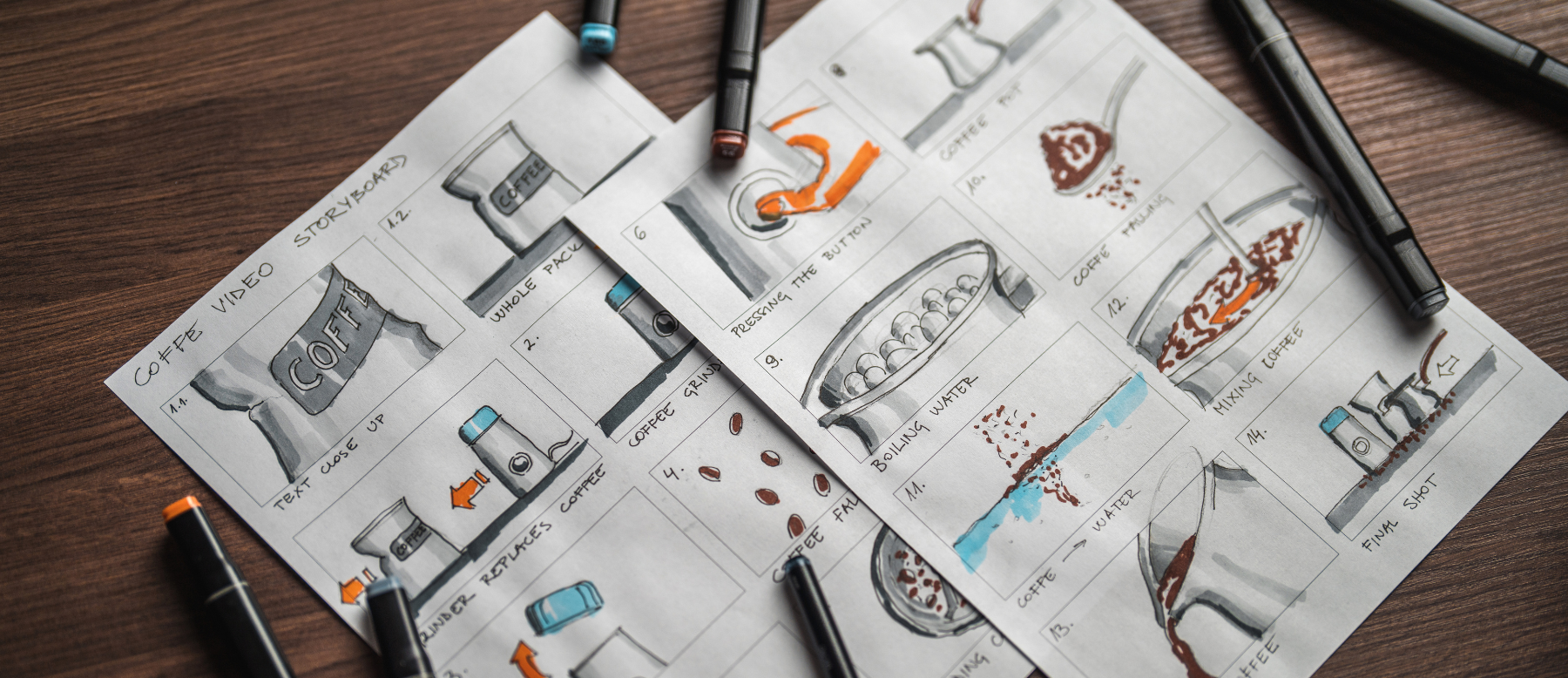In the rapidly evolving world of digital media, video content dominates the landscape. From promotional clips and product demos to engaging social media campaigns, high-quality videos have the power to captivate and convert. However, the true foundation of every successful video lies in storyboarding in professional video production, which sets the stage for creativity, clarity, and efficiency, ensuring each project achieves its full potential.
What is Storyboarding?
Storyboarding is the process of creating a visual outline for a video. It consists of a sequence of drawings or images representing each shot, often accompanied by notes on camera angles, dialogue, or action. This pre-production step helps translate ideas into a clear, visual narrative.
Why is Storyboarding Essential?
- Clarifies Vision and Objectives A storyboard allows everyone involved in the project—from the creative team to the client—to visualize the final product before production begins. It ensures alignment on the video’s tone, style, and message.
- Saves Time and Money By planning each shot, storyboarding reduces the likelihood of costly reshoots or missed opportunities. It streamlines the production process, making it easier to stay on schedule and within budget.
- Improves Communication A storyboard serves as a universal language for everyone on the team. Directors, editors, and even actors can refer to it for guidance, ensuring smooth collaboration and fewer misunderstandings.
- Enhances Creativity Seeing the visual flow of a video on paper (or screen) can spark new ideas. It’s easier to experiment with different angles, transitions, or effects during the planning stage than during production.
Key Components of a Storyboard
- Frames: Visual representations of each shot, typically sketched or created digitally.
- Descriptions: Notes on what happens in each frame, including action, dialogue, and camera movements.
- Timing: Indications of how long each shot will last.
- Audio Cues: Details on background music, sound effects, or voiceovers.
How to Create an Effective Storyboard
- Start with a Script A well-written script is the foundation of a good storyboard. Break the script into scenes or key moments to outline visually.
- Sketch or Use Digital Tools Don’t worry if you’re not an artist! Rough sketches are fine, or you can use tools like Storyboarder, Canva, or Adobe Photoshop to create professional-looking frames.
- Focus on Key Shots Highlight the most important moments, including establishing shots, close-ups, and action sequences. These will guide the flow of your video.
- Get Feedback Share the storyboard with your team and stakeholders to gather input and make adjustments before production begins.
Real-World Applications of Storyboarding
- Corporate Videos: Ensures brand consistency and clear messaging.
- Non-Profit Campaigns: Helps convey emotional narratives effectively.
- Trade Association Promotions: Aligns complex ideas with visual storytelling.
- Product Demos: Breaks down technical details into engaging visuals.
Conclusion
Storyboarding is a crucial step in professional video production. It acts as a roadmap, guiding the creative process and ensuring that the final video delivers on its goals. By investing time in this planning phase, businesses and organizations can create high-quality videos that resonate with their audiences and achieve their objectives.
Whether you’re a small business, trade association, or non-profit, embracing the power of storyboarding can elevate your video content and set your brand apart. Need help with your next video project? Contact Tandem Studios today for expert guidance and professional production services.
